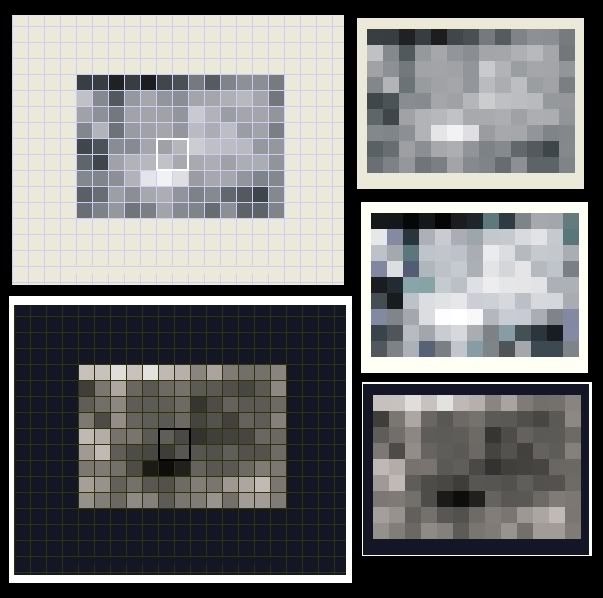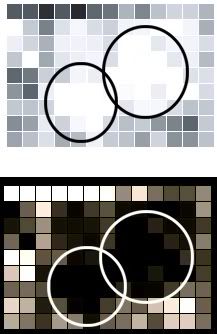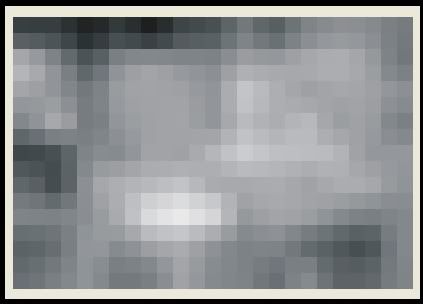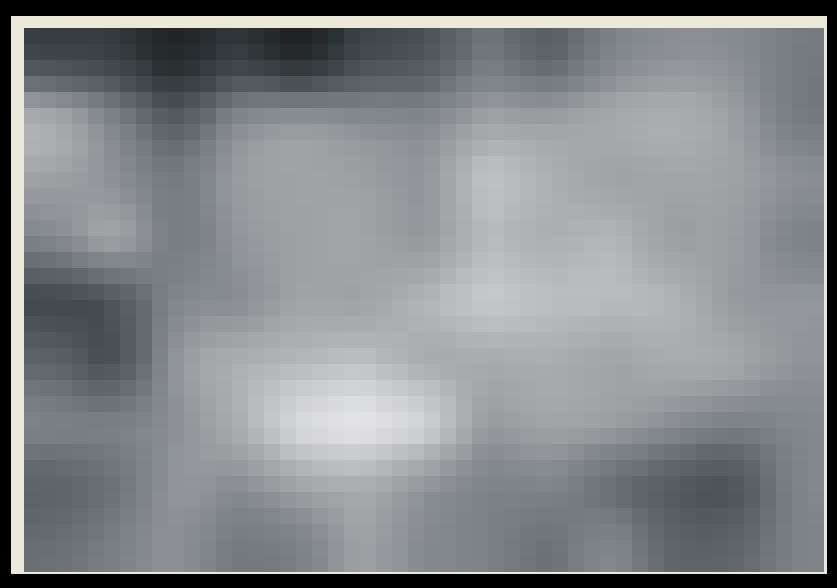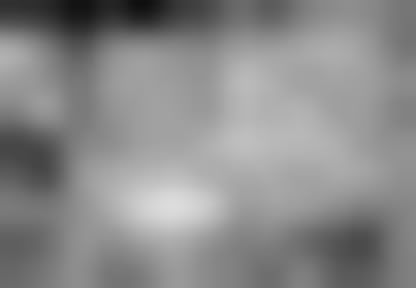- Thank you received: 0
Requiem for Relativity
16 years 11 months ago #19949
by marsrocks
Replied by marsrocks on topic Reply from David Norton
Please Log in or Create an account to join the conversation.
16 years 11 months ago #19950
by marsrocks
Replied by marsrocks on topic Reply from David Norton
Please Log in or Create an account to join the conversation.
16 years 11 months ago #20689
by marsrocks
Replied by marsrocks on topic Reply from David Norton
Please Log in or Create an account to join the conversation.
16 years 11 months ago #19951
by marsrocks
Replied by marsrocks on topic Reply from David Norton
Please Log in or Create an account to join the conversation.
16 years 11 months ago #20690
by marsrocks
Replied by marsrocks on topic Reply from David Norton
Please Log in or Create an account to join the conversation.
- Joe Keller
-
- Offline
- Platinum Member
-

Less
More
- Thank you received: 0
16 years 11 months ago #19953
by Joe Keller
Replied by Joe Keller on topic Reply from
In Barbarossa's Cavern There Are No Stars (Part XVI)
Thanks, "marsrocks", for the beautiful artwork! From my data, you've produced the first image in history (and in ten versions!) of a nebula within Barbarossa's solar system, only 200 AU (est.) from Earth.
This might be an advantageous time to start using the name, "Barbarossa", as a label. Otherwise, in the future it might be difficult to prove what the image was supposed to be.
The Iowa State Univ. library has fifteen books on Frederick Barbarossa that I know of, but only two are in English and one of those is missing. Much of what I know about Barbarossa is from Thomas Carson's "Barbarossa in Italy", a translation of a long, mysterious, almost perfect neoclassical Latin poem rediscovered in the Vatican Library in 1877 and apparently written by a Lombard scholar attached to Barbarossa's army as a translator or guide. In one scene, as I interpret it, someone tried to seize the papacy by having a heavily armed militia of his supporters run around Rome robbing and "vandalizing" (line 675), presumably more explicitly burning out and killing, the supporters (including cardinals) of Barbarossa's just-completed crowning as Emperor by Pope Adrian IV (an Englishman named Nicholas Breakspear)(Bk. II, lines 657-715). Barbarossa's troops soon were galloping through the streets of Rome, slaying these rioters, though Barbarossa took many prisoners (released the next day, to the custody of Adrian IV) and even ordered that the fleeing rioters not be ridden down, shot in the back with crossbows, etc. (lines 739-751). In another scene (Bk. V, lines 3000-3033) Barbarossa, at the suggestion of some of the other military leaders, orders some hostages spectacularly stoned to death, but, quickly enough to save some of them, realizes that this is inhumane. With the help of this precedent, stoning did not become the normal punishment in Europe.
Henry Ford said history is "more or less bunk", and Nietzsche said history amounts mainly to paying close attention to old newspapers. However, at least one person who had worked with Barbarossa during his invasion of Italy, and who was intelligent, educated and sober enough to write almost flawless Latin poetry (Carson thinks the content of the poem indicates that the author was familiar not only with almost the entire Bible, but also with almost the entirety of the work of most major classical Latin writers) had an opinion of Barbarossa which he expressed by writing a favorable eyewitness account, after Barbarossa had departed.
I noted in Part XIII that the "E" (approx. equal to "Rc" at moderate visible wavelengths) sensitivity curve, of the plates on which the USNO-B "R1" is based, extends almost 300A more blueward than does the curve on which "R2" is based. Part XV's averaging involving "I" magnitude, can't correct this. A USNO-B search shows that the fraction of relatively bluish stars (B2 < +17.00) among my sample stars (+15.00 < R2 < +17.00) doubles (from 16% to 29%) for an 8deg shift, from my region southward (the galactic equator is SW by S). (The fraction increases almost as much with a westward or northward shift, and only slightly decreases with an eastward shift; the region of Barbarossa is a 10deg-wide island or isthmus of dim B2 magnitude.) So, my region (9x13deg) is big enough to need detrending, to remove the effect of galactic latitude on R1 vs. R2, due to the better blue sensitivity of R1.
I mapped the region with a projection equating 4m RA to cos(7.5deg)* 1deg. The best-fitting linear detrending, was that which removed the positive trend in the direction 103.6deg clockwise from N (i.e., W by SW). This direction differs 40deg from the perpendicular to the galactic equator, but agrees precisely with the gradient of bluish stars. (I found log(fraction) of relatively bluish stars, as above, in a 10deg diam circle centered on my region, and in additional circles displaced 8deg toward azimuths, clockwise from N, 0, 90, 135, 180, & 270. With Simpson's and Cotes' rules I convolved these with cosine(azimuth) for various phases, finding that the gradient of blue stars lies in the direction 102.3deg.) The correlation coefficient was 0.307, indicating that the trend explains 9% of the variance. The significance ( 9*13 - 2 = 115 degrees of freedom) of the trend is p = 0.0008 (2-tailed). The detrended matrix (this is my best representation of Barbarossa's nebula so far) is
-828,-998,-1198,-791,-1386,-520,-377,-163,-732,-277,197,-31,-259
808,501,-258,650,850,764,673,564,461,302,698,286,-280
586,476,218,865,795,797,536,890,580,281,304,339,-54
343,738,157,891,918,738,655,672,494,574,148,258,111
-728,-501,393,762,830,681*,1027*,860,594,678,516,145,263
-278,-545,755,669,709,770**,870*,698,400,143,301,364,110
94,54,522,506,993,1122,1094,451,388,199,169,-108,191
-945,-204,395,347,345,212,546,-187,-190,-238,-227,-893,28
-273,-33,346,-134,-174,187,285,-206,-407,107,-597,-396,109
(**) denotes the degree-square containing the Barbarossa center of mass in 1991; (*) denotes the three next closest squares.
Thanks, "marsrocks", for the beautiful artwork! From my data, you've produced the first image in history (and in ten versions!) of a nebula within Barbarossa's solar system, only 200 AU (est.) from Earth.
This might be an advantageous time to start using the name, "Barbarossa", as a label. Otherwise, in the future it might be difficult to prove what the image was supposed to be.
The Iowa State Univ. library has fifteen books on Frederick Barbarossa that I know of, but only two are in English and one of those is missing. Much of what I know about Barbarossa is from Thomas Carson's "Barbarossa in Italy", a translation of a long, mysterious, almost perfect neoclassical Latin poem rediscovered in the Vatican Library in 1877 and apparently written by a Lombard scholar attached to Barbarossa's army as a translator or guide. In one scene, as I interpret it, someone tried to seize the papacy by having a heavily armed militia of his supporters run around Rome robbing and "vandalizing" (line 675), presumably more explicitly burning out and killing, the supporters (including cardinals) of Barbarossa's just-completed crowning as Emperor by Pope Adrian IV (an Englishman named Nicholas Breakspear)(Bk. II, lines 657-715). Barbarossa's troops soon were galloping through the streets of Rome, slaying these rioters, though Barbarossa took many prisoners (released the next day, to the custody of Adrian IV) and even ordered that the fleeing rioters not be ridden down, shot in the back with crossbows, etc. (lines 739-751). In another scene (Bk. V, lines 3000-3033) Barbarossa, at the suggestion of some of the other military leaders, orders some hostages spectacularly stoned to death, but, quickly enough to save some of them, realizes that this is inhumane. With the help of this precedent, stoning did not become the normal punishment in Europe.
Henry Ford said history is "more or less bunk", and Nietzsche said history amounts mainly to paying close attention to old newspapers. However, at least one person who had worked with Barbarossa during his invasion of Italy, and who was intelligent, educated and sober enough to write almost flawless Latin poetry (Carson thinks the content of the poem indicates that the author was familiar not only with almost the entire Bible, but also with almost the entirety of the work of most major classical Latin writers) had an opinion of Barbarossa which he expressed by writing a favorable eyewitness account, after Barbarossa had departed.
I noted in Part XIII that the "E" (approx. equal to "Rc" at moderate visible wavelengths) sensitivity curve, of the plates on which the USNO-B "R1" is based, extends almost 300A more blueward than does the curve on which "R2" is based. Part XV's averaging involving "I" magnitude, can't correct this. A USNO-B search shows that the fraction of relatively bluish stars (B2 < +17.00) among my sample stars (+15.00 < R2 < +17.00) doubles (from 16% to 29%) for an 8deg shift, from my region southward (the galactic equator is SW by S). (The fraction increases almost as much with a westward or northward shift, and only slightly decreases with an eastward shift; the region of Barbarossa is a 10deg-wide island or isthmus of dim B2 magnitude.) So, my region (9x13deg) is big enough to need detrending, to remove the effect of galactic latitude on R1 vs. R2, due to the better blue sensitivity of R1.
I mapped the region with a projection equating 4m RA to cos(7.5deg)* 1deg. The best-fitting linear detrending, was that which removed the positive trend in the direction 103.6deg clockwise from N (i.e., W by SW). This direction differs 40deg from the perpendicular to the galactic equator, but agrees precisely with the gradient of bluish stars. (I found log(fraction) of relatively bluish stars, as above, in a 10deg diam circle centered on my region, and in additional circles displaced 8deg toward azimuths, clockwise from N, 0, 90, 135, 180, & 270. With Simpson's and Cotes' rules I convolved these with cosine(azimuth) for various phases, finding that the gradient of blue stars lies in the direction 102.3deg.) The correlation coefficient was 0.307, indicating that the trend explains 9% of the variance. The significance ( 9*13 - 2 = 115 degrees of freedom) of the trend is p = 0.0008 (2-tailed). The detrended matrix (this is my best representation of Barbarossa's nebula so far) is
-828,-998,-1198,-791,-1386,-520,-377,-163,-732,-277,197,-31,-259
808,501,-258,650,850,764,673,564,461,302,698,286,-280
586,476,218,865,795,797,536,890,580,281,304,339,-54
343,738,157,891,918,738,655,672,494,574,148,258,111
-728,-501,393,762,830,681*,1027*,860,594,678,516,145,263
-278,-545,755,669,709,770**,870*,698,400,143,301,364,110
94,54,522,506,993,1122,1094,451,388,199,169,-108,191
-945,-204,395,347,345,212,546,-187,-190,-238,-227,-893,28
-273,-33,346,-134,-174,187,285,-206,-407,107,-597,-396,109
(**) denotes the degree-square containing the Barbarossa center of mass in 1991; (*) denotes the three next closest squares.
Please Log in or Create an account to join the conversation.
Time to create page: 0.347 seconds

